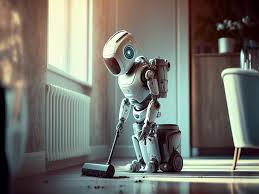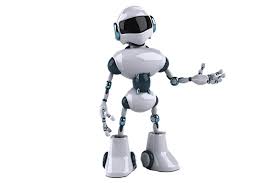A robot is a mechanical machine capable of performing pre-programmed actions, either with a direct signal and control from a human or with a signal from computer programs. The work that the robot is programmed to perform is often arduous, dangerous, or delicate work, such as searching for mines and disposing of radioactive waste, or delicate or arduous industrial work. The word “robot” appeared for the first time in 1920, in the play by Czech playwright Karl Šapek, titled “Rossumovi univerzální roboti”. The word “robot” in the Czech language symbolizes hard work, as it is derived from the word “Robota” which means forced labor or compulsory labor. What are live instruments in theatrical work? Starting from this date, this word began to spread in science fiction books and films that presented, over the years, a number of ideas and perceptions of these machines and their relationship with humans, which would have opened great horizons for inventors to innovate and develop as much as possible of them.
There is an argument between scientists and linguists alike regarding the exact definition of a robot. Some say that this adjective is applied to every machine that a person can control and move remotely, while others do not agree with this, and their argument is that these machines are similar to the car or A remote-controlled plane cannot be considered a robot because it does not have the ability to think and make decisions on its own, and they cite an example that if that machine can act according to a predetermined program by moving away from the barrier two steps back and turning to the right or left and continuing to advance, then this It makes it possible to call it a real robot. It is clear from this that the basic idea that the owners of this opinion adhere to is that the real robot, according to the belief of some, must possess artificial intelligence and have the ability to distinguish patterns, recognize systems, infer and deduce.
The basic science according to which robots are made is the science of robotics, and the science of robotics is a science that is concerned with building automated machines that are used to perform a specific task, and it is also known as the intersection of four basic sciences: mathematics, mechanical engineering, informatics, and finally science, and it means the science or field that the robot serves.
There are many types of robots, including those used in the industrial sector, which are automatic devices that can be adapted and reprogrammed, and move on three or more axes. And control the quality or validity of finished products, as it is used in assembling auto parts in factories. These robots are usually programmed to carry out their tasks quickly, repetitively and accurately, and what is called computer vision (in English: Computer vision) was added to these robots during the first years of the first decade of the twenty-first century, which made them enjoy a kind of independence and flexibility in implementation Programmed tasks, by understanding and analyzing the images it receives on a special computer installed inside it.
There are forms of robots that are able to move and drive on their own, including drones, and self-controlled aircraft with artificial neural networks, [13] Perhaps the most prominent of these types are the two robots sent by the International Space Agency in 2004 to the surface of Mars. And there are some robots that are able to reassemble themselves semi-independently, such as reducing their size to pass through a narrow tunnel, and these robots contain in their model several links in addition to the central processing unit and the receivers of instructions and their own memory, and these robots are capable of some semi-compliant movements, to contain them On a flexible unit, it does this either by converting the energy of compressed air in cylinders into linear or rotational motions, or by converting electrical energy into kinetic energy. There are other advanced methods that have been devised to move the robots, including the digital micromirror device, which was announced for the first time in 1987, and its idea was based on setting up several thousand micro mirrors in the robot to respond to the image element, to add flexibility. More in the movement and reaction.
There are also types of robots dedicated to doing housework, teaching children and playing chess. This type of robot is called a social robot, and it has a high degree of independence. It is noted that the term social robot cannot be applied to a tool that is controlled by a person from afar, as a social robot must pass two “main tests” to be classified as a social type:
Turing Test: It is a test to see if a robotic system can be called an intelligent system. This test was developed by the British mathematician Alan Turing (1912-1954). It is a dialogue with a robot. If the tester cannot be 100% certain that the answer was a human or a robotic answer, then the test is considered successful and the robot is intelligent.
Isaac Asimov test: It is a test that aims to show the extent to which the robot adheres to the so-called laws of robotics. These laws are:
The robot must not cause any harm to human beings.
Human commands must be obeyed unless it conflicts with the First Law.
He must defend himself unless this conflicts with the first and second laws.
It is rare for robots to be designed in the form of a complete human being, and it can be said that a robot is a device or a machine that can replace a person in some situations, and its external form depends on the task for which it was made. The human body is a highly capable organ that can perform many functions. The robot can carry out special tasks that may cause boredom in humans, or take a very long time, or the practice of which poses a threat to human life, and then the robot is manufactured to perform limited tasks.
The communication and control devices inside the robot can be very complex, just like the human body devices, and then they have an independent science to study them, which is cybernetics. Automatically, it must rely on a system that performs the feedback process in order to achieve self-control. As for the communication and control devices, they are:
A telephone device that operates with buttons, and it is equipped with a limited memory to store repeated numbers, because the robot needs a comprehensive memory.
Sensitive devices that enable them to reach their targets. The robot needs a number of these devices to collect information about the surrounding environment.
Automatic kettle, turns itself off when the liquid inside it boils. The robot needs many automated systems in order to be able to perform its functions efficiently.
An automatic temperature stabilizer that keeps it at the same room temperature, turns itself off and on automatically, according to information it gets from its sensitive devices.
The robot’s mind is the unit that runs it, which implements or computes the various algorithms that the robot needs to be able to carry out its tasks, such as recognizing and navigating its surroundings, in order to understand natural language. Artificial neural networks are used in programming many of the aforementioned functions, as they are usually arranged in the form of layers of artificial neurons, each containing a number of neurons, and connected to all or some of the neurons in the layer that follows or precedes it. It is also possible that the software processing unit is not present in the robot itself, as if one processor is allocated to a number of robots, that is, what can be considered a unified mind, and this technology is called shared memory, in other words, it is a central computer that implements the various algorithms needed by one robot or group of them.
In the past, the mind or the processor was the weak point in the robot systems because this mind used to occupy a huge weight and a huge size and had a simple calculation ability, but at the present time the matter has been turned upside down, as it is possible to produce an electronic mind of a very small size. The electronic brain usually consists of silicon chips and other electronic parts that are connected to each other. And the mind of the robot is like a small computer, and therefore it does not have the ability to think innovative or independent like the human mind, but rather remains a mere slave who obeys the orders issued to him by the human being. However, some experts say that if the robot’s electronic mind is provided with the appropriate instructions, it can theoretically develop a program according to which it leads a spaceship to the planet Uranus, for example, or operates an oil refinery, or calculates the salaries of employees in a company, and still has time to win a match of chess. Although the electronic mind does not enjoy intelligence, it has what is called “machine intelligence”, and some electronic minds at the present time can benefit from their past experiences, while some other computers teach themselves how to solve problems they encounter, instead of relying on instructions produced by humans. And it seems that electronic computers learn how to do things better than the humans who designed them, and then they are able to make decisions that are more accurate and better than the decisions that a person makes. This phenomenon is being studied under what is known as artificial intelligence.


